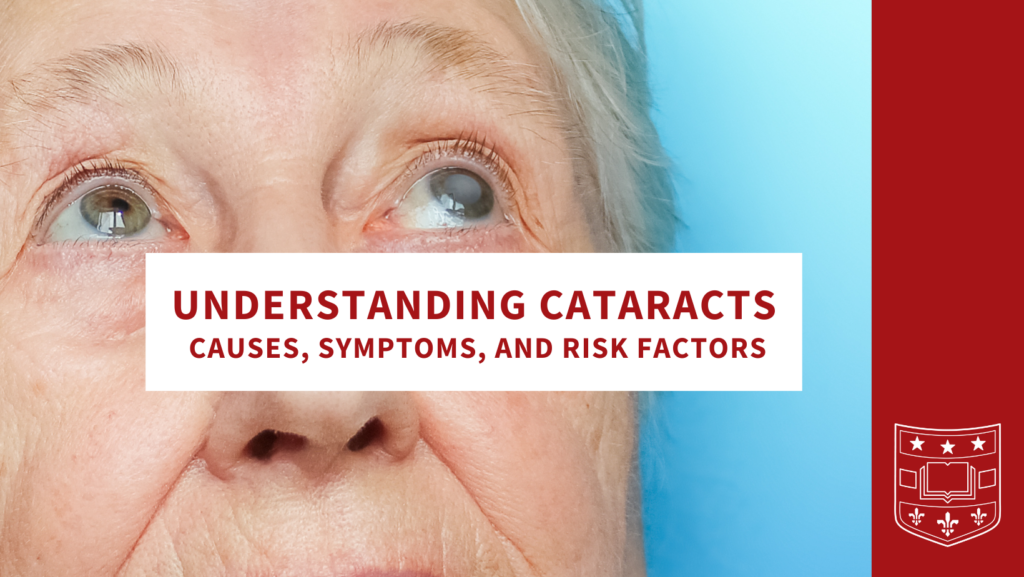
Cataracts are a common eye condition that affects millions of people worldwide, particularly as they age. Understanding what cataracts are, their causes, symptoms, and risk factors can help you take proactive steps in preserving your eye health. In this blog post, we will delve into everything you need to know about cataracts, providing you with valuable information to keep your vision clear and sharp.
What are Cataracts?
Cataracts occur when the natural lens of your eye becomes cloudy, leading to a decrease in vision. This clouding is due to the clumping of proteins in the lens, which can obstruct light from passing through and focusing properly on the retina. As a result, images may appear blurry, hazy, or less colorful. Cataracts typically develop slowly and can affect one or both eyes.
Causes of Cataracts
Understanding the causes of cataracts can help in early detection and prevention. Here are some primary causes:
- Aging: The most common cause of cataracts is aging. As you age, the proteins in your eye’s lens can start to break down and clump together, forming a cloudy area.
- UV Radiation: Prolonged exposure to ultraviolet sunlight can increase the risk of developing cataracts.
- Diabetes: People with diabetes are at a higher risk of cataracts due to high blood sugar levels affecting the eye’s lens.
- Smoking: Tobacco smoke can accelerate the clouding of the lens.
- Alcohol Consumption: Excessive alcohol consumption has been linked to an increased risk of cataracts.
- Trauma: Eye injuries can sometimes lead to the development of cataracts.
- Certain Medications: Long-term use of corticosteroids and other medications can contribute to cataract formation.
- Genetics: A family history of cataracts can increase your likelihood of developing the condition.
Symptoms of Cataracts
Recognizing the symptoms of cataracts early can lead to more effective treatment. Here are some common signs to look out for:
- Blurry Vision: One of the earliest and most common symptoms is blurry or cloudy vision.
- Difficulty with Night Vision: Cataracts can make it challenging to see in low-light conditions or at night.
- Glare and Halos: You might notice glare or halos around lights, which can be particularly bothersome while driving at night.
- Fading Colors: Colors may appear less vibrant or more yellowed.
- Double Vision in One Eye: Sometimes, cataracts can cause double vision in the affected eye.
- Frequent Prescription Changes: Needing to update your eyeglass or contact lens prescription more frequently can be a sign of cataracts.
Risk Factors for Cataracts
While anyone can develop cataracts, certain factors can increase your risk. Understanding these risk factors can help you take preventive measures:
- Age: People over 60 are at a higher risk.
- Sun Exposure: Without adequate eye protection, UV rays can damage the eye’s lens.
- Health Conditions: Conditions like diabetes and hypertension can elevate the risk.
- Lifestyle Choices: Smoking and excessive alcohol consumption are significant risk factors.
- Nutritional Deficiencies: A diet lacking in antioxidants and certain vitamins can increase cataract risk.
- Obesity: Being overweight can contribute to cataract formation.
- Previous Eye Surgery or Injury: These can make you more susceptible to cataracts.
- Genetics: A family history of cataracts can predispose you to the condition.
Prevention and Management
While cataracts are often a natural part of aging, there are steps you can take to manage and potentially reduce your risk:
- Regular Eye Exams: Regular check-ups can help detect cataracts early.
- Protect Your Eyes: Wear sunglasses that block UV rays and a hat to shield your eyes from the sun.
- Healthy Diet: Eat a balanced diet rich in antioxidants, such as fruits and vegetables.
- Avoid Smoking: Quitting smoking can significantly reduce your risk.
- Limit Alcohol: Moderate your alcohol intake.
- Manage Health Conditions: Keep conditions like diabetes and hypertension under control.
- Use Protective Eyewear: If you’re in an environment where eye injuries are possible, use protective eyewear.
Cataracts are a common eye condition that can significantly affect your vision as you age. If are experiencing decreased vision it is crucial to be evaluated by a board-certified ophthalmologist who can determine if cataracts are negatively impacting your vision and establish if you’re a candidate for surgical correction.
Matthew Elitt, MD, PhD
Cataracts are a prevalent condition, especially as we age, but understanding their causes, symptoms, and risk factors can empower you to take steps toward prevention and early treatment. Regular eye exams and a healthy lifestyle can go a long way in maintaining your vision. If you notice any symptoms of cataracts, consult with an eye care professional to discuss your options and ensure the best possible outcome for your eye health.
By staying informed and proactive, you can help ensure that your vision remains clear and your eyes stay healthy for years to come.